Do you have year-round allergies and skin irritation? Microscopic insects found in your carpet, food, bedding, and more may be to blame.
If you’re suffering from allergies, asthma, skin conditions, and more, you may want to look closely at your home. In fact, you might want to put it under the microscope and check for dust mites.
Dust mites are microscopic insects that dwell in and around your home. They get their name because they feed off of dead human skin cells found in dust. They prefer warm, humid environments between 68ºF and 77ºF, and thrive in dust traps like fabrics, mattresses, upholstery, bedding, carpets, and curtains. (1)
Want naturally radiant skin? We’ve created a FREE guide to give you the best tips & tricks for natural skincare.
Click here to get your FREE copy of our Skincare Guide!
While dust mites can’t bite or sting (thank goodness), proteins from their feces and body fragments can cause and irritate many types of allergies. In fact, some researchers believe they’re the number one trigger of year-round allergies, and even asthma. (2)
This may sound scary, but don’t fret: You’re not the only one dealing with dust mites. All homes have them, but whether they cause allergies or irritation depends heavily on their number.
Below we’ll discuss what can happen if dust mites build up in your home, and what to do to keep their numbers down.
What Problems Do Dust Mites Cause?
The biggest problem with dust mites is that they can worsen existing allergies, and even cause allergic reactions in people who are specifically allergic to their proteins. Let’s see how and why this happens.
Dust Mites Worsen Allergies, Hay Fever, and Asthma
While dust mites don’t bite or hop on us directly, proteins in their feces and dead pieces of their body parts can be inhaled and cause allergy symptoms.
Studies show that exposure to these proteins can lead to allergic diseases like asthma and rhinitis (hay fever). This is concerning, considering 45 percent of homes in the U.S. – 44 million dwellings – have bedding with dust mite allergen concentrations that exceed levels associated with allergy symptoms. (3)
Dust mite proteins and pieces cause allergic reactions by stimulating your body’s immune response. This response results in inflammation (both of the airways and skin, or wherever contact occurs), itching, and sneezing, among other allergy symptoms. If a reaction and inflammation occurs in your airways, dust mite proteins may trigger asthma symptoms. (4)
Dust Mites Can Cause Atopic Dermatitis
If you suffer from dermatitis, you may want to consider that dust mites could be making it worse. Studies show patients with atopic dermatitis have higher levels of mites on their skin than individuals without. (5) In the same way that dust mite proteins cause other allergy symptoms, this reaction can also manifest on your skin via inflammation and redness.
Signs You Have a Dust Mite Allergy
Symptoms of a dust mite allergy can vary widely, and often have the same symptoms as seasonal allergies. Be on the lookout for the following symptoms, especially if they occur year-round, or get worse when you’re at home:
- Sneezing
- Runny and/or stuffy nose
- Itchy, red, or watery eyes
- Itchy nose or throat
- Itchy skin
- Postnasal drip (when you feel mucus from behind your nose dripping into your throat)
- Cough
Dust mites can also trigger asthma or asthma-like symptoms like:
- Difficulty breathing
- Chest pain and tightness
- Wheezing
- Trouble sleeping caused by shortness of breath, coughing or wheezing
9 Places You’ll Find Dust Mites in Your Home (and How to Get Rid of Them)
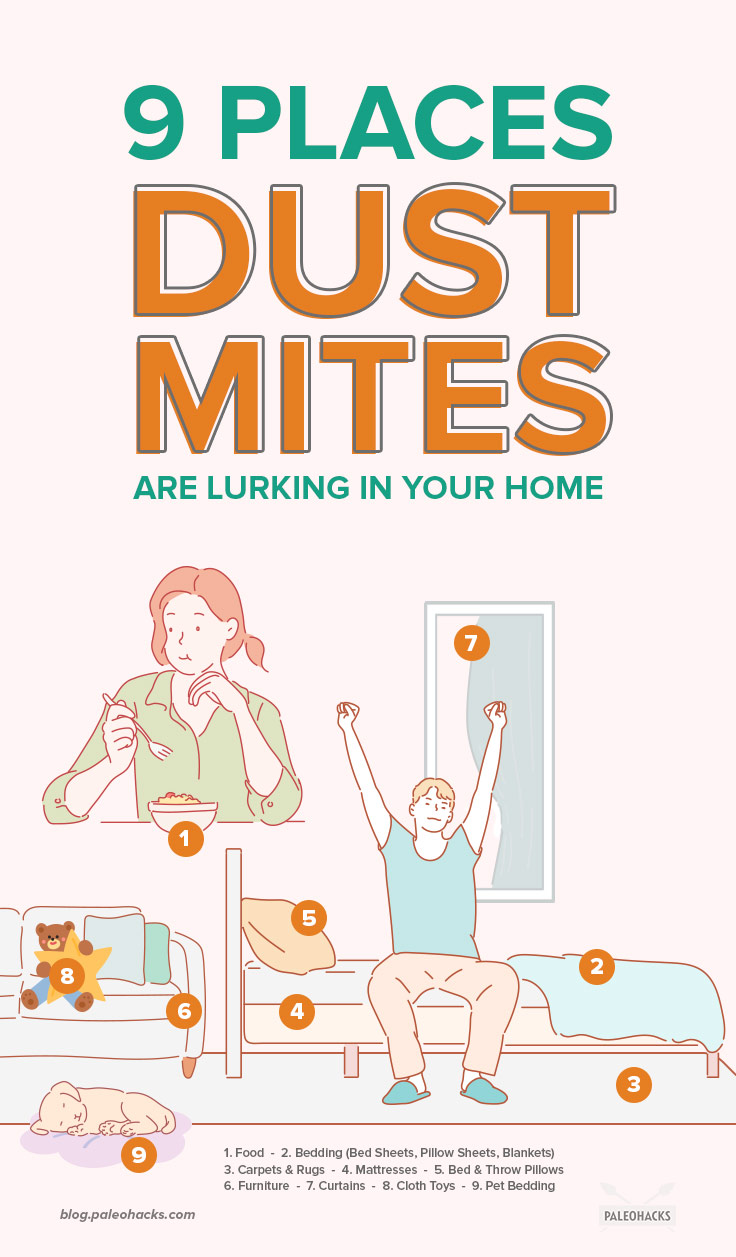
Dust can hide anywhere, bringing dust mites with it. However, there are specific places where dust mites flock. Remember, they love fabrics, so you’ll see a lot of those below.
1. Food
Yes, we cringed too. But before you freak out about dust mites in your food, know that the majority of studies have shown they tend to reside in stored grains and flour: two things we avoid on the Paleo diet. (6)
However, to be on the safe side, make sure to store any dried foods in tightly sealed jars after opening their container, which limits exposure to the house dust where mites live.
2. Bedding (Bed Sheets, Pillow Sheets, Blankets)
Dust mites can linger on bedding, which is why professionals recommend washing it once a week in hot water to kill dust mites.
3. Wall-to-Wall Carpets and Rugs
Like bedding, mites can also burrow into carpeting and rugs. Vacuuming and steam cleaning may help, but researchers recommend replacing carpeting with linoleum or another hard surface, especially if you’re experiencing allergies. (7) In addition, remember to wash your rugs weekly in hot water, or steam clean with hot steam – and don’t forget the bathroom rugs!
4. Mattresses
Mattresses can harbor high levels of dust mites, especially since we usually don’t wash them regularly. Researchers and experts recommend getting a sealable allergen cover for mattresses to protect against exposure to mites. (8) You can find these at some furniture department stores, or order online.
5. Bed and Throw Pillows
Like other pieces of bedding, dust mites can also hide in pillow fabric. Make sure to wash these weekly on a hot cycle along with the rest of your bedding.
6. Furniture
Fabric furniture may seem a little more difficult to clean than other items on this list, especially since it can’t exactly go in your wash cycle. Your best bet is to vacuum it as thoroughly as you can, using a vacuum with a HEPA filter to trap allergens, which can be found online.
7. Curtains
Curtains are a fabric that can harbor dust mites, especially from dust that’s been kicked up into the air. You can either remove them and replace them with roll shades or another option, or wash them weekly in hot water (not all types can be washed, so double-check before you do).
8. Cloth Toys (Stuffed Animals)
Cloth toys can house dust mites as well, and your children likely inhale them when playing. For toys, you can either wash them in hot water or put them in the freezer for 24 hours. The cold temperatures also kill dust mites. (9)
9. Pet Bedding
Don’t forget your pet’s bedding! These are extra important, as pets might collect extra dust from the outdoors and then lay in their bedding. Wash these once a week in hot water as well.
How to Keep the Dust Mites Away
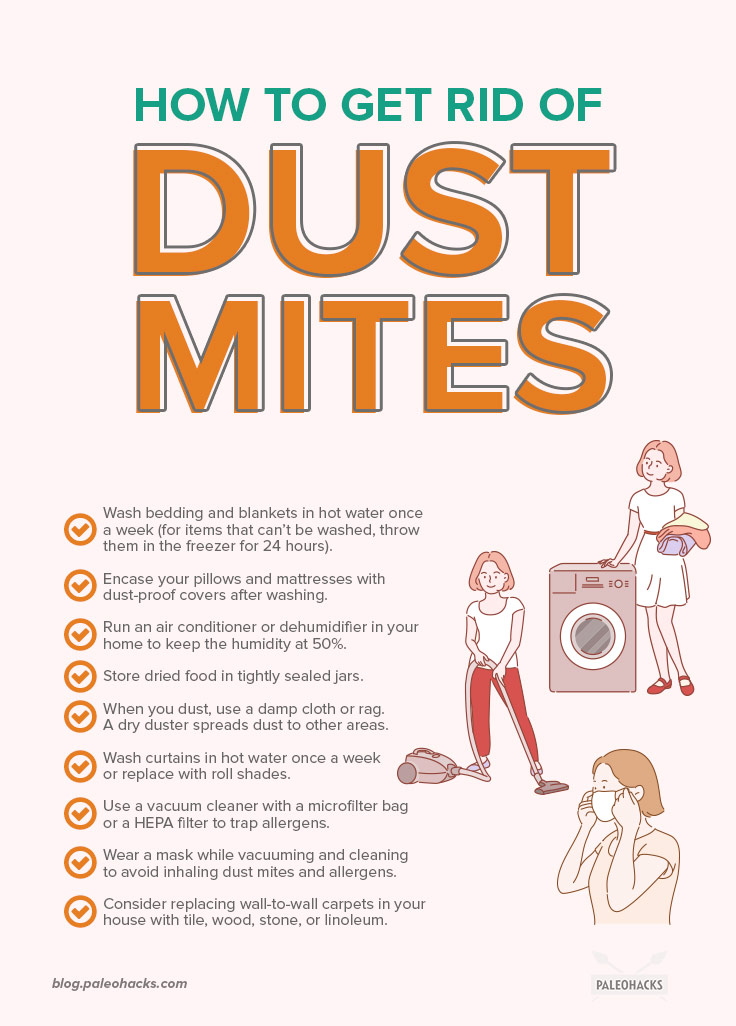
While it’s next to impossible to eliminate all dust mites from your home for good, you can greatly reduce their number with this checklist. (10) Keep in mind that dust mites usually die in extreme temperatures and can live year-round in a warm, humid home. This is why you’ll see a lot of advice for reducing humidity and washing bedding in hot water.
- Wash all your bedding and blankets in hot water once a week (for items that can’t be washed, throw them in the freezer for 24 hours). (11)
- Encase your pillows and mattresses with dust-proof or allergen-impermeable covers after washing.
- Run an air conditioner or dehumidifier in your home to keep the humidity at around 50%.
- Store dried food in tightly sealed jars.
- When you dust, use a damp cloth or rag. A dry duster simply spreads dust and mites to other areas.
- Wash curtains in hot water once a week or replace with roll shades, if possible.
- Consider using a vacuum cleaner with a microfilter bag or a HEPA filter to trap allergens that could pass through your vacuum’s exhaust.
- Wear a mask while vacuuming and cleaning to avoid inhaling dust mites and allergens.
- If you can, consider replacing wall-to-wall carpets in your house with tile, wood, stone, or linoleum, as it’s much more difficult for dust mites to burrow in and live on these surfaces.
The Bottom Line
Dust mites are a fact of life. We know we can’t get rid of them completely, but we can take steps to drastically reduce their numbers and reduce allergens. If you’re constantly suffering from allergy symptoms, give these allergy-proofing tips a try.


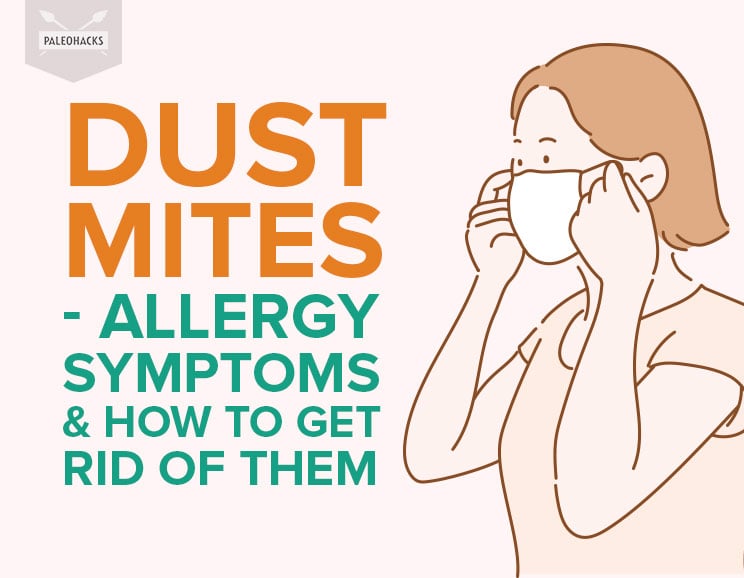
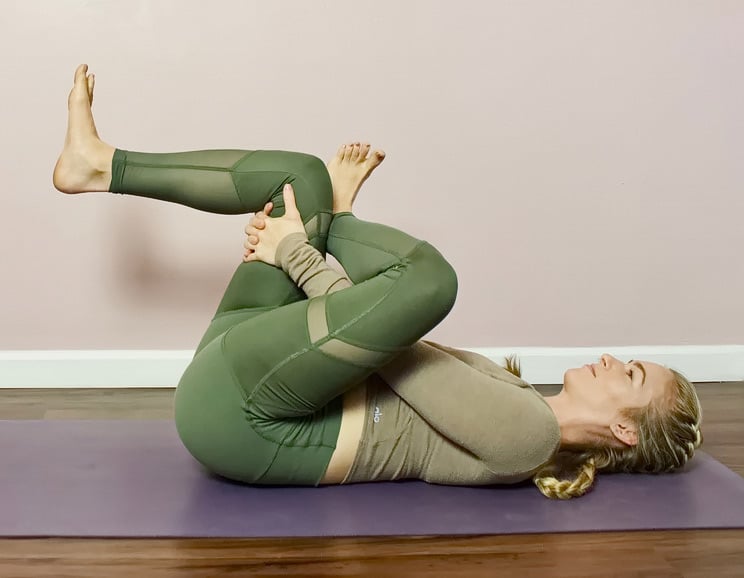 The 10-Minute Stretch Routine Your Tight Hips Are Begging For
The 10-Minute Stretch Routine Your Tight Hips Are Begging For
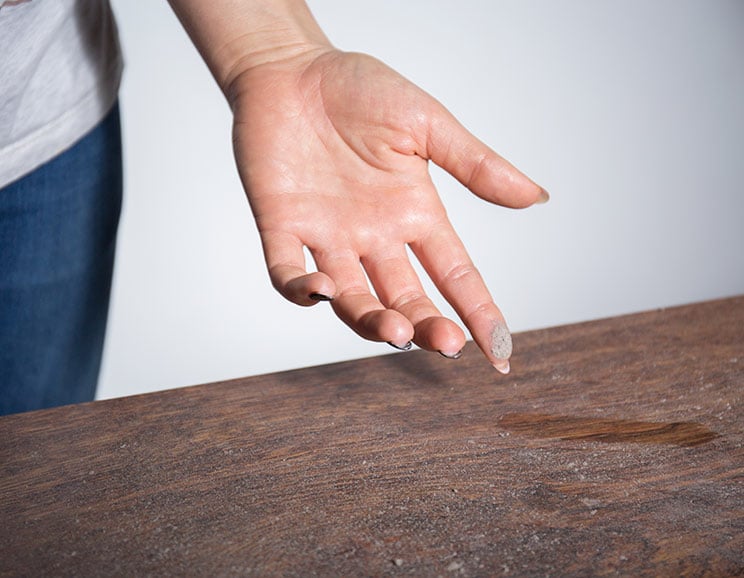






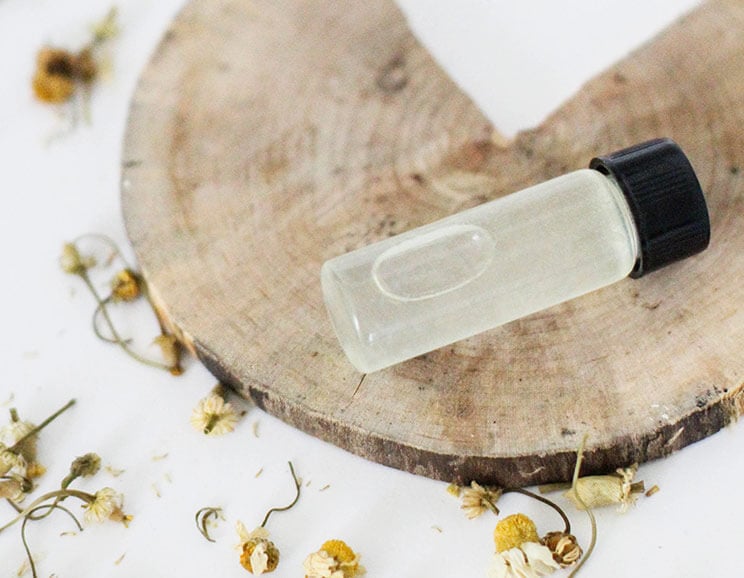
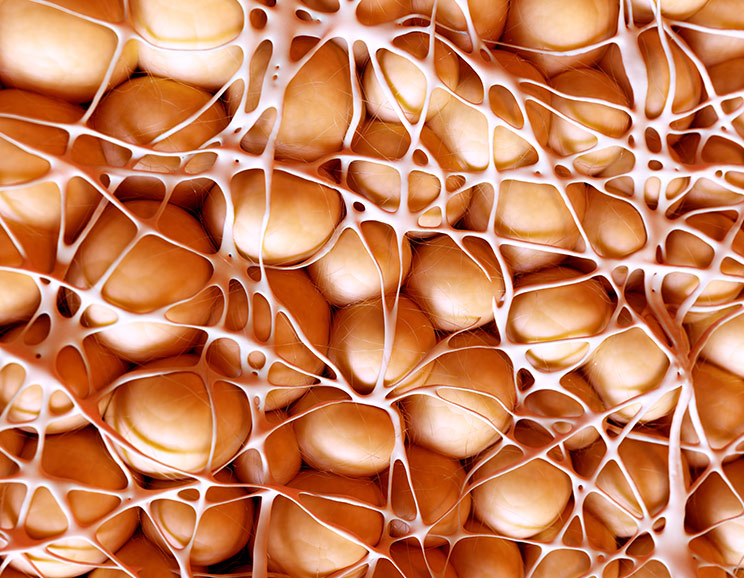
Show Comments